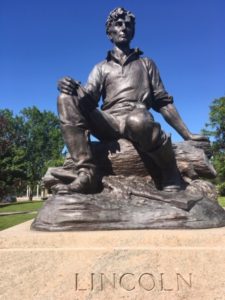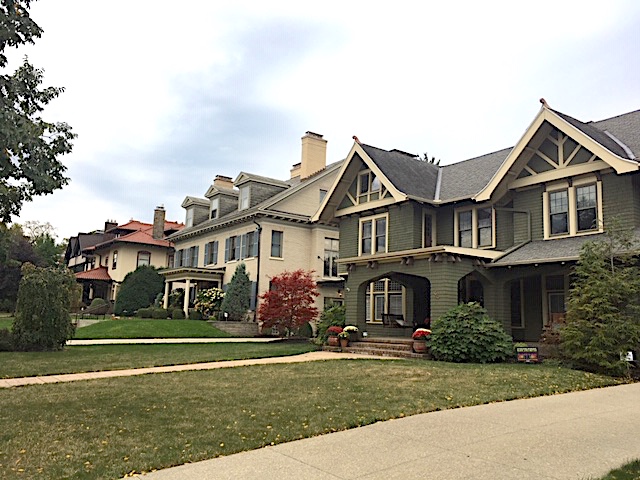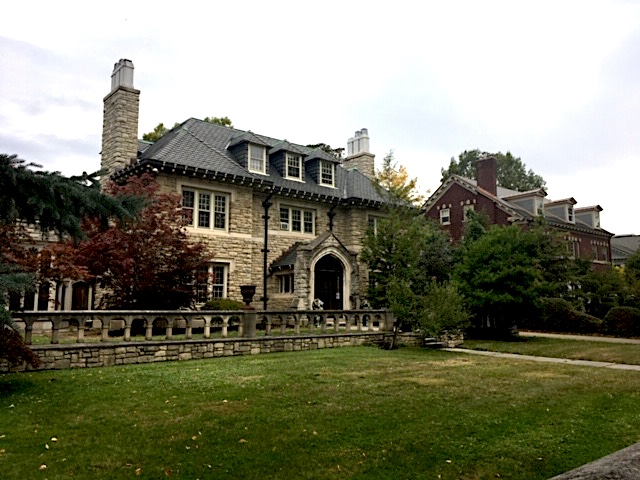Lincoln Parkway
Buffalo,
NY
|
Reprint Explore Buffalo – Lincoln Parkway by David Rock From Delaware Park to Soldiers Place, Lincoln Parkway lies at the heart of America’s first interconnected park and parkway system, envisioned by Frederick Law Olmsted and Calvert Vaux in 1868, a decade after they designed Manhattan’s Central Park. Far from the battlefields of the Civil War, Buffalo boomed with industry and commerce built by its harbor, by ships funneling agricultural commodities and raw materials from the country’s interior — grain, hides, iron ore, oil from Great Lakes ports — to our mills, foundries, breweries, tanneries — and on to the markets of the Eastern Seaboard and beyond via the shallow draft freighters of the Erie Canal. As the city grew, public spaces commensurate with its prosperity were wanted and urban planning commensurate with its stature was needed. We got Olmsted.  Not just conduits to the parks, the parkways are linear parks integrated with the existing streets such that “at no great distance from any point of the town, a pleasure ground will have been provided for more park-like than town-like.” Six rows of elms planted across their 200-foot widths created a forest-like canopy over the parkways. In 1876, midway through the most prolific and influential career in American landscape architecture, Olmsted proclaimed Buffalo “the best planned city as to its streets, public places and grounds in the United States, if not the world.” On Lincoln Parkway, 21st-century Buffalonians preserve early-20th century houses built from 19th-century fortunes made at the Erie Canal’s western terminus in milling, manufacturing, leather, lumber, oil, ice and, grandest of all, soap. Larkland, the Larkin family’s vast Colonial Revival estate designed by McCreary, Wood & Bradney dominates the parkway’s east side, with the 1915 John Larkin Jr. House on the corner of Forest Avenue. The parkway’s west side is bookended to the south by Frank Lloyd Wright’s 1905 Prairie Style house for Larkin Soap Co. executive William Heath on Soldiers Place, and to the north by Green & Wicks’ 1905 Albright Art Gallery. Enriched by railcars of westbound coal and eastbound grain, John J. Albright was suspicious of abstract art according to his biographer, Mark Goldman. No wonder we have a Neoclassical replica-Acropolitan-temple museum on Lincoln Parkway. Presumably, it reflects the preferences and pretensions of the class educated to venerate the ancient world as the cradle of civilization. S.H. Knox Co. 5 and 10 Cent Store heir and prolific collector of contemporary art Seymour Knox Jr. supported the gallery’s 1962 International Style addition designed by Buffalo-born Gordon Bunshaft.   At 107 Lincoln Parkway there’s a warning: a herringbone brick walkway leading nowhere. This is where the John Larkin Sr. House was demolished in 1939. (Frank Lloyd Wright’s Larkin Administration Building met the same fate in 1950.) Nearby, the Scajaquada Expressway cuts through Delaware Park on its way to the Kensington Expressway which replaced Olmsted’s Humboldt Parkway with six lanes of traffic speeding back and forth from the suburbs. People matter more than cars. Parks and neighborhoods matter more than expressways. As Francis Kowsky, author of The Best Planned City in the World: Olmsted, Vaux and the Buffalo Park System, wrote of Delaware Park, “being there matters more than getting somewhere else fast.” Olmsted got it right. |

web site consulting by ingenious, inc.